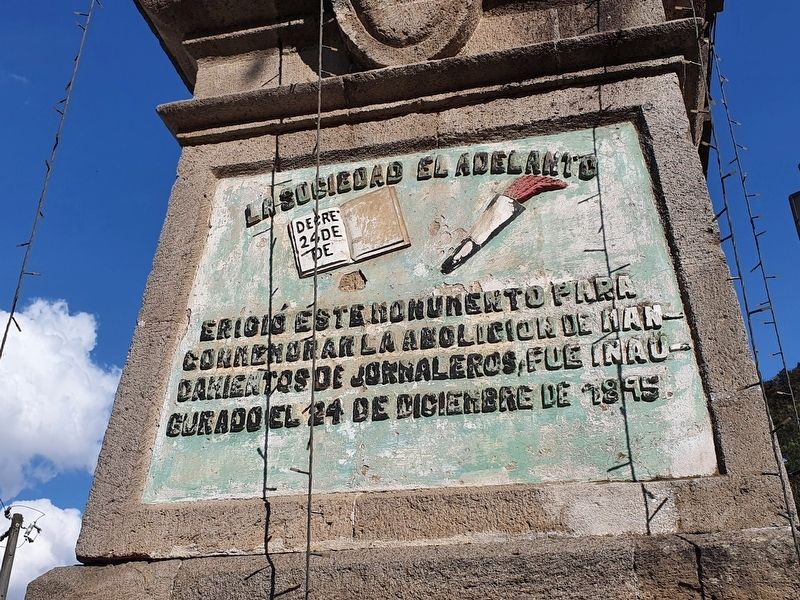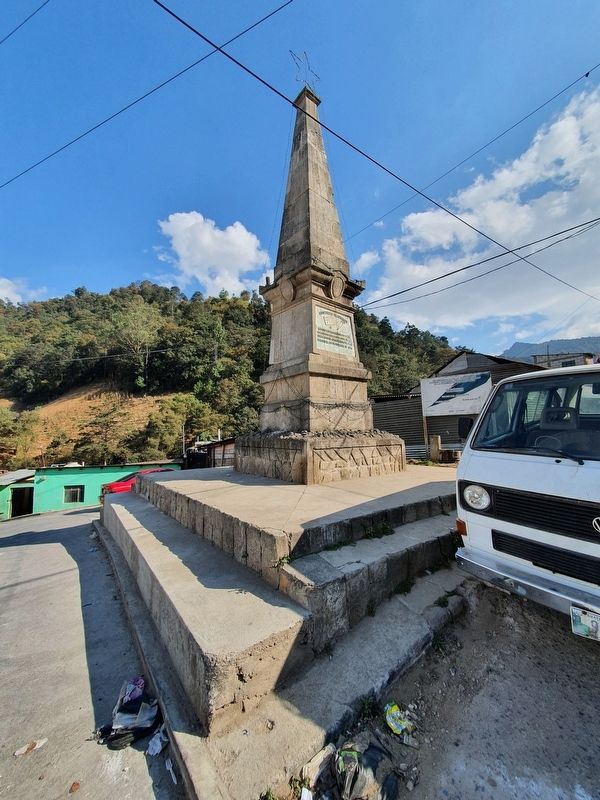Quetzaltenango, Guatemala — Central America
Abolition of Forced Indigenous Labor
The Advancement Society erected this monument to commemorate the abolition of forced indigenous labor. It was inaugurated on December 24, 1895.
Topics. This historical marker is listed in these topic lists: Civil Rights • Industry & Commerce • Native Americans. A significant historical date for this entry is December 24, 1895.
Location. 14° 49.405′ N, 91° 30.996′ W. Marker is in Quetzaltenango. Marker is on Carretera Almolonga-Quetzaltenango just north of Avenida El Cenizal, on the right when traveling north. Touch for map. Marker is in this post office area: Quetzaltenango 09013, Guatemala. Touch for directions.
Other nearby markers. At least 8 other markers are within walking distance of this marker. Simón Bolívar (approx. 1.1 kilometers away); Cultural Center (approx. 1.1 kilometers away); Cathedral of the Holy Spirit (approx. 1.2 kilometers away); The Death of Remigio Mérida (approx. 1.2 kilometers away); La Exposición Artesanal e Industrial (approx. 1.2 kilometers away); The Quetzaltenango City Hall (approx. 1.2 kilometers away); Site of the Discovery of the Virgin of Sorrows (approx. 1.2 kilometers away); Rafael Landívar University (approx. 1.4 kilometers away). Touch for a list and map of all markers in Quetzaltenango.
Also see . . . Justo Rufino Barrios at Wikipedia. See the "Economy" section of this Wikipedia entry to learn more about how forced indigenous labor was the backbone of the new coffee economy of Guatemala during the late 19th century. (Submitted on December 21, 2021, by J. Makali Bruton of Accra, Ghana.)
Credits. This page was last revised on December 21, 2021. It was originally submitted on December 21, 2021, by J. Makali Bruton of Accra, Ghana. This page has been viewed 86 times since then and 5 times this year. Photos: 1, 2. submitted on December 21, 2021, by J. Makali Bruton of Accra, Ghana.

